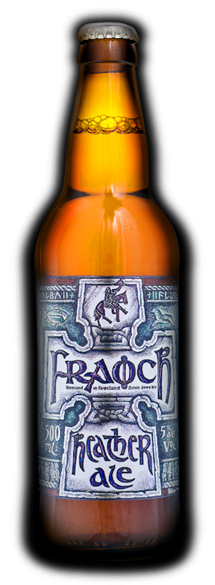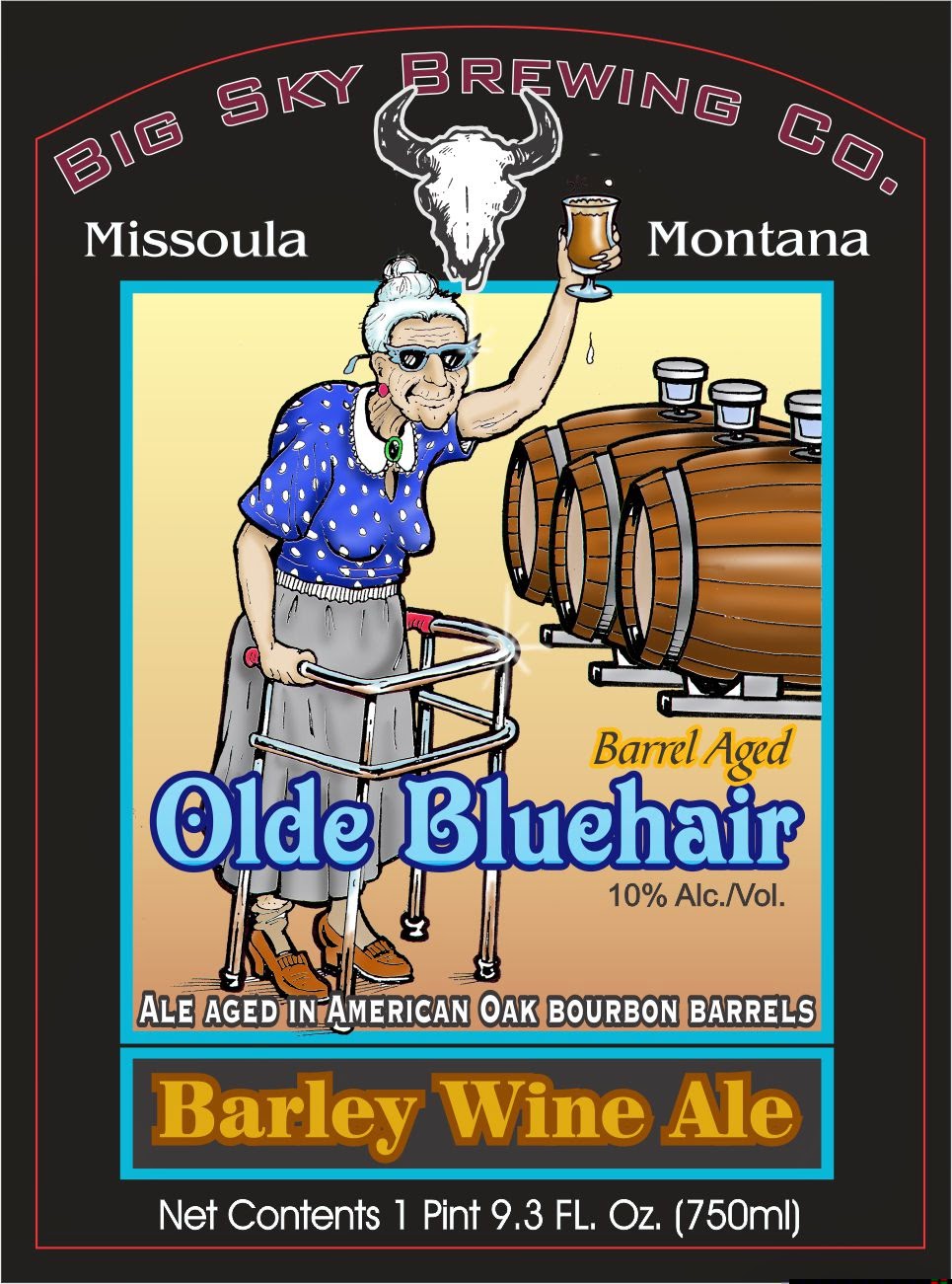Recipe - Brewday - Tasting
While I'm on the subject of local ingredients--
blackberries,
hops,
more blackberries,
more hops,
apples and pears--let's just add another to the list: wormwood. My friend Kristin has a small herb garden and last spring at a beerfest we decided to find a way to incorporate her herbs into a beer. These days beers are just spiced with hops, but I remembered reading somewhere that wormwood--the headline ingredient in absinthe once thought to cause hallucinations--was once used as a bittering agent in a concoction known as gruit, back before everybody was addicted to
lupulin. Even though we're trying to brew with one of the most bitter herbs known to man, at least there's a precedent. Of all my crazy experiments, this is one of them.
Gruit dates back to the dark ages and is the forerunner of modern beer. An unhopped ale, it was spiced with a mixture of herbs (also known as gruit) that provided bitterness, flavor and acts as a preservative. Myrica gale, yarrow, march rosemary, juniper, wormwood, mugwort, heather, horehound, and others found their way into the brew. The exact composition of these blends was a closely held secret, often safeguarded by feudal lords and church officials, and varying from region to region and from era to era, so there is no canonical recipe to consult.
I've been researching this beer off and on for the last five months trying to learn as much as I can about the ingredients, their flavors, side effects, historical recipes, and ancient brewing practices. Homebrew forums had little to say--or at least little positive to say--about gruit. Many recipes I found dated all the way back to the
Great Hop Shortage of 2008 when homebrewers found it impossible to obtain the hop varieties for many of their favorite recipes Some tried their hand at gruit... and quickly found it a fool's errand. After striking out, my next stop was the
Brew Your Own archives for a good executive summary. I also found the relatively authoritative
Gruit Ale site had a nice overview of the history of gruit, as well as a quick round up of relevant herbs and some basic recipes. It is well focused, but lacked the depth to make me comfortable compiling my own recipe. I found that the source with the most detail on the herbs was Stephen Harrod Buhner's
Sacred and Herbal Healing Beers. He devoted sections to each of the primary gruit herbs, providing historical and social context to their use, and providing recipes that used each. However Buhner is clearly an herbalist, not a brewer, as the brewing details often make little sense. I also picked up Randy Mosher's
Radical Brewing, though that turned out to be more of a showcase of crazy recipes. It was inspiring to see the breadth of beers I have yet to brew, but the section on gruit added nothing new.
In the end I decided to brew two different recipes from two distinct traditions. The first is a classic gruit generally following the recipes outlined in Buhner and Mosher. Those recipes call for an even mix of
yarrow,
myrica gale, and
marsh rosemary. Myrica gale and marsh rosemary are distinct herbs, but are close relatives and have similar flavors and psychoactive properties. Beer historian Martyn Cornell
claims that it is unlikely both were regularly used in the same recipe, with myrica gale being the favorite when available, so I used it exclusively in this recipe. Until I've brewed with these recipes I won't make my own observations, so go ahead and check out the resources above if you're interested: Gruit Ale for a quick brewing-focused overview and Buhner's book for a more thorough treatment.
Ingredients:
------------
Amt Name Time
1 oz Yarrow 15 min
1 oz Myrica Gale 15 min
.25 oz Wormwood 15 min
.5 oz Yarrow Dry hop (7 days)
.5 oz Myrica Gale Dry hop (7 days)
.25 oz Wormwood Dry hop (7 days)
As I mentioned earlier, I found the variety of beer in
Radical Brewing is inspiring and one of the beers it inspired me to brew is an ancient Scottish heather ale, or Leann Fraoch in Scottish. Before the Edward I of England drew and quartered William Wallace, before the Vikings sacked Lindisfarne, and in all likelihood well before Hadrian built his wall , the Pictish tribes used heather to flavor their brews. If you've ever read the
poem by Robert Louis Stevenson, this is the beer he's talking about. Martyn Cornell again has an
interesting post on the origins of this brewing tradition.
For my interpretation, I want to work in wormwood somewhere, as that ingredient is the reason we are brewing these beers in the first place. Most recipes I found, including the one from Mosher and one from
BYO include a small amount of hops for bittering, but that is almost certainly anachronistic. Hops don't grow well in the northern latitudes like Scotland. Instead I'll use the wormwood with a bit of myrica gale for bittering, then load up on heather for flavor and aroma.
Ingredients:
------------
Amt Name Time
.25 oz Wormwood 15 min
.25 oz Myrica Gale 15 min
4 oz Heather 0 min
2 oz Heather Dry hop (7 days)
.5 oz Myrica Gale Dry hop (7 days)
So now that we have the spices out of the way, what about the rest of the beer? Well before coke-fired malting and the advent of pale malt, most malt was darker in color, usually faintly smokey from the wood-fired kilns, and inconsistently modified. I certainly don't have any malt like that, but for a rough approximation I built the grist on a blend of pale malt and brown malt. I then added some rauch malt for just a touch of smoke and some crystal and chocolate malts to round out the recipe. Back then beers were all mixed fermentation with a blend of yeast strains, plus brett and bacteria. I'm not ready to through all those sorts of variables into the mix, nor risk infecting my equipment, so I'll just stick to the Irish ale yeast I have on hand.
Gruits
--------------------------
Batch Size (fermenter): 7.50 gal
Estimated ABV: 6.5 %
Estimated OG: 1.068 SG
Estimated FG: 1.019 SG
Estimated Color: 22.6 SRM
Estimated IBU: 0.0 IBUs
Brewhouse Efficiency: 65.00 %
Boil Time: 60 Minutes
Ingredients:
------------
Amt Name %/IBU
16 lbs Pale Malt (2 Row) US (2.0 SRM) 72.7 %
3 lbs Brown Malt (65.0 SRM) 13.6 %
1 lbs 8.0 oz Smoked Malt (3.0 SRM) 6.8 %
1 lbs Caramel/Crystal Malt - 40L (40.0 SRM) 4.5 %
8.0 oz Chocolate Malt (350.0 SRM) 2.3 %
1.0 pkg Irish Ale Yeast (Wyeast Labs #1084) -
Mash Schedule: Single Infusion @154F, No Mash Out, Batch Sparge x2
Total Grain Weight: 22 lbs
Estimated Cost: $32.40

If you actually made it to the end of all that, you'll notice I dodged a very important question: what does it actually taste like? And that's because I have no idea. I've done some looking and while I haven't yet tried these beers, I found several that are distributed in the United States. If you're curious, maybe you can find one yourself.
Fraoch - Williams Bros Brewing, Alloa, Scotland
Gruit - New Belgium Brewing, Fort Collins, CO
Weekapaug Gruit - Cambridge Brewing Company, Cambridge, MA
Heather Ale - Cambridge Brewing Company, Cambridge, MA
Posca Rustica - Brasserie Dupont, Tourpes, Belgium
 I started off the morning, by brewing a rye ale, and now it's time to get this IPA underway. It makes for a long day, but if I can brew 10 gal of beer in 11 hours instead of 5 gal of beer in 8 hours then sign me up.
I started off the morning, by brewing a rye ale, and now it's time to get this IPA underway. It makes for a long day, but if I can brew 10 gal of beer in 11 hours instead of 5 gal of beer in 8 hours then sign me up. With the rye ale out of the brew kettle, I could finally move on to lautering and batch sparging. I turn on the burner while sparging to heat the first runnings near boiling and reduce the time to boil when I finally get to full volume, but this time I got the heat a little high. The first runnings reached a hard boil before I even started draining the second runnings. I doubt it's a big deal, but if there's a bit extra melanoidin formation than normal I wouldn't be surprised.
With the rye ale out of the brew kettle, I could finally move on to lautering and batch sparging. I turn on the burner while sparging to heat the first runnings near boiling and reduce the time to boil when I finally get to full volume, but this time I got the heat a little high. The first runnings reached a hard boil before I even started draining the second runnings. I doubt it's a big deal, but if there's a bit extra melanoidin formation than normal I wouldn't be surprised.

































